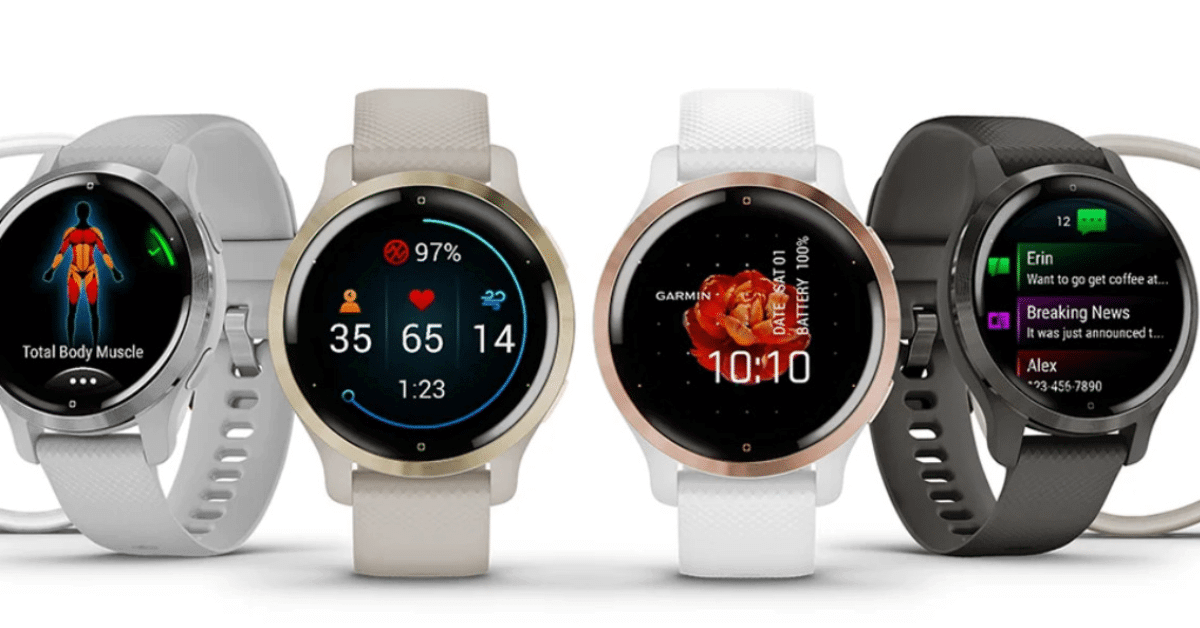Monitoring stress has become a pivotal feature of modern fitness technology, with Garmin leading this innovation 1. This article explores the sophisticated methods and technologies Garmin uses to assess stress levels in its range of wearable devices.
What technology does Garmin use to measure stress?
Garmin measures stress using heart rate variability (HRV), a metric from the time intervals between heartbeats. By analyzing these intervals with advanced algorithms, Garmin’s devices can track and report on fluctuations in stress levels throughout the day.
Key Features of Garmin Stress Tracking
- Variabilidad de la frecuencia cardíaca (VFC): Core metric for stress analysis.
- Monitoreo en tiempo real: Continuous assessment during daily activities.
- Puntuación de estrés: Quantifies stress levels from 0 to 100.
- Physiological Sensors: Additional data from skin temperature and breathing rate.
- Personalized Feedback: Tailors insights based on individual health patterns.
- Activity Type Recognition: Differentiates between physical and psychological stress.
Explicación de la variabilidad de la frecuencia cardíaca
Ever wonder why some days you feel like a leaf in the wind, reacting to every slight disturbance, while on others you’re as calm as a seasoned captain navigating smooth seas? The answer might lie in a concept known as heart rate variability (HRV). HRV measures the time intervals between your heartbeats, and a higher variability indicates a healthier stress response.
Garmin harnesses this metric to monitor how stress levels fluctuate throughout your day. Garmin’s devices can paint a detailed picture of your body’s stress landscape by capturing these beat-to-beat changes. It’s like having a mood ring for your heart but backed by solid science and less about color changes.
This capability not only tracks how you handle stress but also helps in stress prevention by alerting you to take necessary actions when your heart rate increases unpredictably. Monitoring heart rate variability offers a proactive approach to managing stress, ensuring that you remain the master of your sea, no matter how stormy it gets.
Garmin’s Stress Tracking Technology
Delving deeper into technological sorcery, Garmin employs a blend of advanced sensors and sophisticated algorithms dedicated to decoding your stress levels. These aren’t just any sensors; they’re tiny detectives constantly gathering clues about your heart’s behavior.
Divulgación: algunos de los enlaces de este artículo pueden ser enlaces de afiliados, que pueden compensarme sin costo alguno. Si decides comprar, esto ayudará a que este sitio crezca y ayudará a más personas. ¡Gracias por marcar la diferencia!
The key to Garmin’s stress tracking is its ability to monitor physiological measurements and interpret them through complex algorithms continuously. This system provides real-time insights into your stress levels, enabling Garmin devices to monitor and guide you. It’s as if you have a personal wellness coach strapped to your wrist, advising you on when to take a breath or push through.
| Device Model | HRV Monitoring | Additional Sensors |
|---|---|---|
| Garmin Venu | Sí | Skin Temperature, Breathing Rate |
| Garmin Fenix | Sí | Skin Temperature |
| Garmin Forerunner | Sí | Breathing Rate |
| Garmin Vivoactive | Sí | None |
With such technology, Garmin offers a way to track stress levels that adapt to your physiological patterns. This individualized approach ensures that the device can provide feedback that is not only accurate but also tailored to your unique stress signatures, helping you understand and manage your stress in the most effective way possible.
Accuracy of Garmin’s Stress Scores
When Garmin claims to measure stress from 0 to 100, it’s not throwing darts at a board to see where they land. Instead, it employs accurate stress measurement techniques that rely heavily on the precision of heart rate data. This data is calibrated against known baselines of stress and relaxation, providing a stress score you can trust.
The technology behind these scores involves meticulous stress analysis by Firstbeat, comparing real-time data with historical averages specific to each user. This means your Garmin device is not just measuring stress; it’s measuring your stress, making the data as personal as a handwritten letter.
This personalization helps in making stress management more approachable. With precise scores, users can see the immediate effects of their stress-reduction efforts, such as meditation or exercise, providing a rewarding and motivating feedback loop that encourages continued practice and improvement.
Differentiating Types of Stress
Not all heroes wear capes, and not all stressors pound you with the same intensity. Garmin recognizes this difference by distinguishing between physical and psychological stress. Using data from your variable heart rate, Garmin devices can pinpoint whether you’re stressed from running a marathon or just running late for a meeting.
This distinction is important because the body handles these stress types differently. Physical stress often results in predictable heart rate patterns, while psychological stress can cause more sporadic fluctuations. By identifying the type of stress, Garmin devices can offer more specific suggestions for stress management tailored to the situation at hand.
Recognizing different stress types also aids in long-term health management. For instance, understanding when your stress is physical allows for better recovery planning, whereas identifying emotional stress can help develop better coping strategies. This tailored approach helps manage stress effectively and supports overall wellness, keeping you ready and resilient no matter what life throws your way.
Pensamientos personales
In my experience, leveraging Garmin’s stress tracking based on heart rate variability has added a quantifiable element to managing my stress. It allows me to monitor the efficacy of different stress-reduction techniques in real-time.
This objective measurement complements my analytical approach to stress management, offering a clear picture of what works for me and aiding in my ongoing efforts to effectively balance personal and professional pressures.
Preguntas frecuentes
How does Garmin detect changes in stress levels?
Garmin devices detect changes in stress levels by continuously monitoring heart rate variability (HRV). This involves measuring the tiny variations in time between each heartbeat, which can indicate shifts in the autonomic nervous system’s response to stress.
What role does HRV play in Garmin’s stress analysis?
Heart rate variability is central to Garmin’s stress analysis as it provides insights into the balance between the sympathetic and parasympathetic nervous systems. By tracking HRV, Garmin can assess how well your body copes with stress and recovery, ultimately offering a detailed stress profile.
Can Garmin devices differentiate types of stress?
By analyzing heart rate data patterns, Garmin devices can differentiate between physical and psychological stress. They use variations in heart rate and HRV to distinguish between stress caused by physical exertion and stress stemming from emotional or cognitive sources.
Do Garmin devices use other sensors for stress tracking?
While Garmin primarily uses HRV data for stress tracking, some models also incorporate other physiological sensors, such as breathing rate and skin temperature, to enhance the accuracy and depth of stress level assessments.




